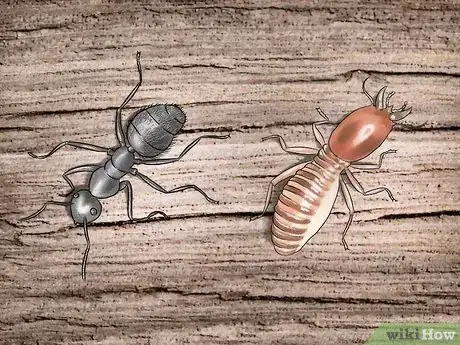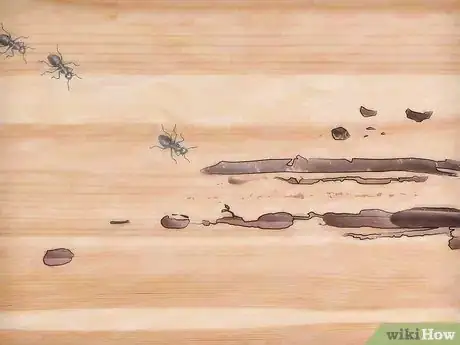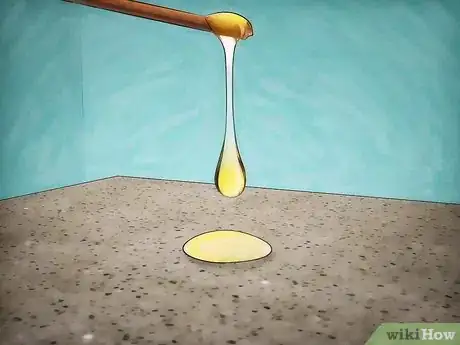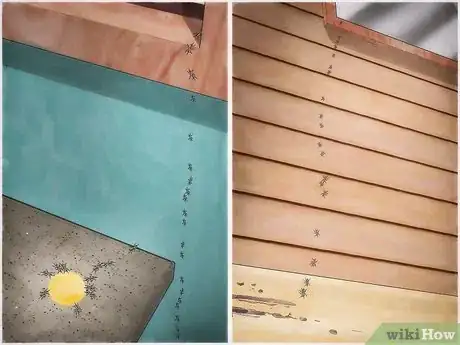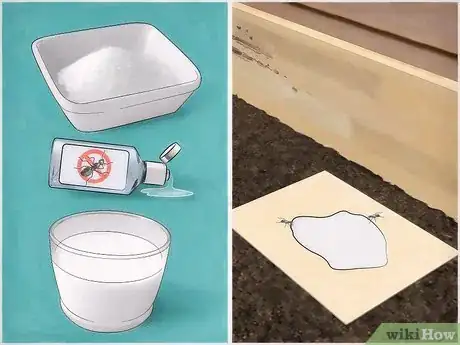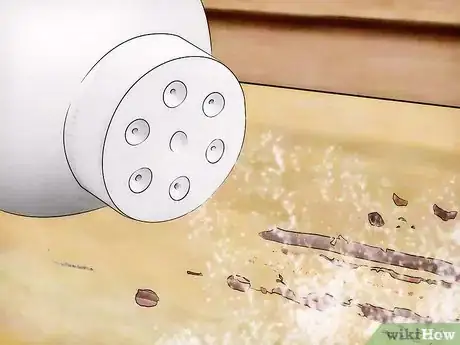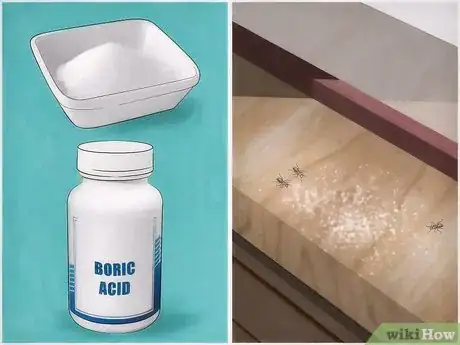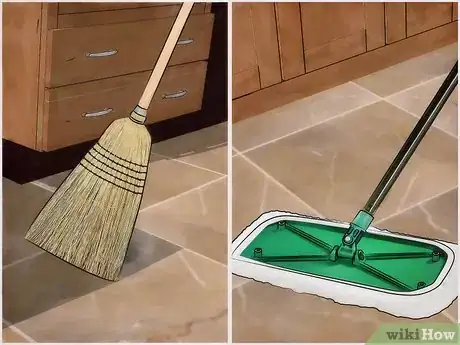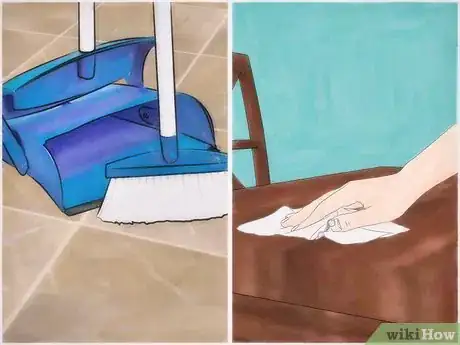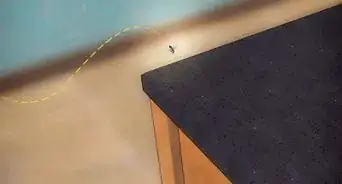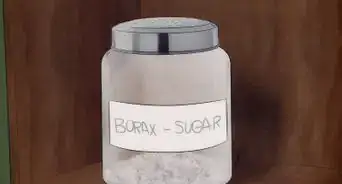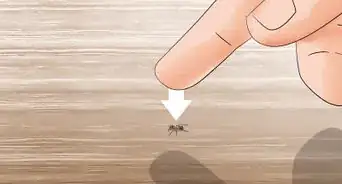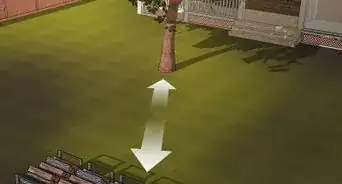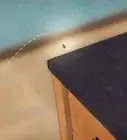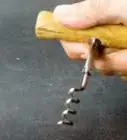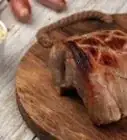This article was co-authored by Scott McCombe. Scott McCombe is the CEO of Summit Environmental Solutions (SES), a family-owned local pest solutions, animal control, and home insulation company based in Northern Virginia. Founded in 1991, SES has an A+ rating with the Better Business Bureau and has been awarded “Top Rated Professional,” and “Elite Service Award" by HomeAdvisor.
wikiHow marks an article as reader-approved once it receives enough positive feedback. This article received 25 testimonials and 87% of readers who voted found it helpful, earning it our reader-approved status.
This article has been viewed 1,336,952 times.
Carpenter ants build their nests in wood, so they're often found in and around homes. Unlike termites, they don't actually eat the wood, they just nest there. Carpenter ants can infiltrate a home and get into your food and water sources. Read on to learn how to control carpenter ant populations to prevent them from becoming a nuisance.
Steps
Finding the Nest
-
1Make sure you're dealing with ants, not termites. Carpenter ants are large black or dark brown insects with three body segments and six legs.[1] They have bent antennae. The worker ants are wingless, while the reproductive ants have wings.[2] They tend to walk in long trails. Termites, which are a far worse problem to have, have straight antennae and light colored bodies. If you're dealing with termites, read this article.
-
2Look for frass. Frass is a sawdust-like material left behind when ants bore into wood to make their nests. It will contain body parts and debris, but will basically look like a pile of light wood shavings.[3] If you see this around your house, it's a telltale sign you've got an ant problem on your hands.[4]Advertisement
-
3Look for wood damage. Wood that is serving as a nest for ants will have slits or holes. You'll usually see frass scattered nearby as well. Ants like to nest in walls, hollow doors, cabinets, beams, and structural wood. Look for areas where the wood is slightly damp, since ants like to build their nests in moist wood.
-
4Set out bait nearby. To find the nest, you'll need to lure the ants out with some bait, then trail them back to the nest so you can figure out exactly where they're hiding. Set out very small bits of honeydew or another sugary fruit near where you believe the nest to be located.
-
5Trail the ants to the nest. When the ants take the bait, follow them back to the nest. You'll probably see them crawl into a space in the wall, a cabinet, or a door. Keep watching until you're sure where the nest is located.
- If the nest is visible and accessible, you can get rid of the nest itself by moving to the next step.
- If the nest is hidden and difficult to reach, you're going to want to use the toxic bait to kill the ants. It will take about three days to go into effect.
Removing the Ant Population
-
1Use the toxic bait method. This method is best to use if the nest is hidden or inaccessible. You'll use toxic bait to lure the ants out of the nest; they'll carry it back to the nest, and within about three days the ant population will be poisoned. Buy some carpenter ant toxic gel bait and mix it with a spoonful of sugar and a spoonful of milk. Set some out near where you suspect the ants live. Wait for the ants to come out and take the bait.
- It is essential that the bait you use be slow acting. If it kills the worker ants on their way back to the nest, the thousands of ants still back at the nest won't be affected. Choose a bait that takes about three days to work.
- Never spray the line of carpenter ants you see coming from the nest with insecticide. This won't harm the ants still lying in wait, and could actually cause them to sense danger and spread out to build more nests.
- If you have pets or small children, tamper-resistant bait stations are a safer option for dispensing toxic baits.
-
2Destroy the nest with direct dusting. This method is effective when you can access the nest easily and apply carpenter ant dust directly to the queen and the entire colony. Choose a carpenter ant dust and follow the instructions on the package to apply the dust to the nest.
- Diatomaceous earth is a natural, nontoxic dust that can be used to kill carpenter ants without bringing poisons into your home.[5]
- Other chemical dust such as Delta Dust and Drione Pest Insecticide Dust is also effective, but it does contain toxins and could pose health risks to pets and children.
-
3Try a boric acid bait.
- Buy boric acid at a garden supply store.
- Mix with powdered sugar, in a ratio of about 1/3 sugar to 2/3 boric acid.
- Fill bottle caps with the mixture. Set down around the area where you observe the ants.
- When they return it to the nest, it will kill the ants in the nest. Boric acid penetrates the ant's body and dissolves inside of the ant.
Preventing Carpenter Ants from Coming Back
-
1Clean up your house to make it a bad breeding ground for carpenter ants. Do this by cleaning floors well, fixing any leaky faucets that might dampen wood, and removing any clutter that creates shelter for them.[6]
-
2
-
3Remove natural debris from around the home. Cut tree limbs back so they aren't hanging directly over your house. Clean up weeds, leaves, wood piles, and other natural debris that's close to your house and could be harboring an ant population.[7]
-
4Clean up crumbs and water leaks. Ants need sugar, protein and water sources to survive. Keeping these basic needs away from them is the best way to prevent them from infesting your home. Keep the floors and counters free of crumbs and clean up spills, especially sugary spills. Fix faucet leaks and make sure there's no accessible water in the area.[8]
Community Q&A
-
QuestionWhat attracts carpenter ants in a home?
 Scott McCombeScott McCombe is the CEO of Summit Environmental Solutions (SES), a family-owned local pest solutions, animal control, and home insulation company based in Northern Virginia. Founded in 1991, SES has an A+ rating with the Better Business Bureau and has been awarded “Top Rated Professional,” and “Elite Service Award" by HomeAdvisor.
Scott McCombeScott McCombe is the CEO of Summit Environmental Solutions (SES), a family-owned local pest solutions, animal control, and home insulation company based in Northern Virginia. Founded in 1991, SES has an A+ rating with the Better Business Bureau and has been awarded “Top Rated Professional,” and “Elite Service Award" by HomeAdvisor.
Pest Control Specialist Carpenter ants are drawn to high humidity and moisture, so you might find them near leaks or areas that are chronically wet.
Carpenter ants are drawn to high humidity and moisture, so you might find them near leaks or areas that are chronically wet. -
QuestionMy ants are outside, but I have several stray cats. Will they eat the bait? How do I keep them safe?
 Community AnswerBoric acid is harmful to pets. Put the mixture in a covered container with small holes so that only ants can get in.
Community AnswerBoric acid is harmful to pets. Put the mixture in a covered container with small holes so that only ants can get in. -
QuestionDoes paprika help get rid of ants?
 Community AnswerYes, as does pepper (black, red, chili or cayenne), garlic, cinnamon or cloves.
Community AnswerYes, as does pepper (black, red, chili or cayenne), garlic, cinnamon or cloves.
Warnings
- Keep poisons away from children and pets.⧼thumbs_response⧽
References
- ↑ Scott McCombe. Pest Control Specialist. Expert Interview. 19 November 2019.
- ↑ http://ipm.ucanr.edu/TOOLS/ANTKEY/antid3.html
- ↑ Scott McCombe. Pest Control Specialist. Expert Interview. 19 November 2019.
- ↑ https://www.envirocarepestcontrol.net/2016/04/08/what-does-carpenter-ant-frass-look-like/
- ↑ https://www.canada.ca/en/health-canada/services/pest-control-tips/ants.html
- ↑ Scott McCombe. Pest Control Specialist. Expert Interview. 19 November 2019.
- ↑ https://www.familyhandyman.com/pest-control/how-to-get-rid-of-ants/
- ↑ http://www.domyownpestcontrol.com/how-to-get-rid-of-carpenter-ants-a-218.html
About This Article
To get rid of carpenter ants, mix equal parts baking soda and powdered sugar in a shallow bowl and place it wherever you've seen the ants. The powdered sugar will attract the ants, and the baking soda will kill them. Spray any ants you encounter with soapy water to kill them and get rid of their scent trail. Try to find the ants’ nest by following them to where they take food back to. Or, check for damaged wood in and around your home, since carpenter ants chew through wood to make their nests. When you find the nest, spray it with a non-toxic insecticide, or pour boiling water into it if it’s located outdoors. For serious infestations, consider calling a pest-control agency. To prevent carpenter ants from coming back, mix equal parts water and vinegar in a spray bottle, and spray your baseboards, windowsills, and countertops with it. The smell of the vinegar will confuse and deter the ants. You should also keep your kitchen as clean as possible since carpenter ants are attracted to crumbs and food spills. Finally, make sure to seal entrances, like doors and windows, and cut back brushes or trees that carpenter ants could nest in. To learn how to tell the differences between carpenter ants and termites, keep reading.
